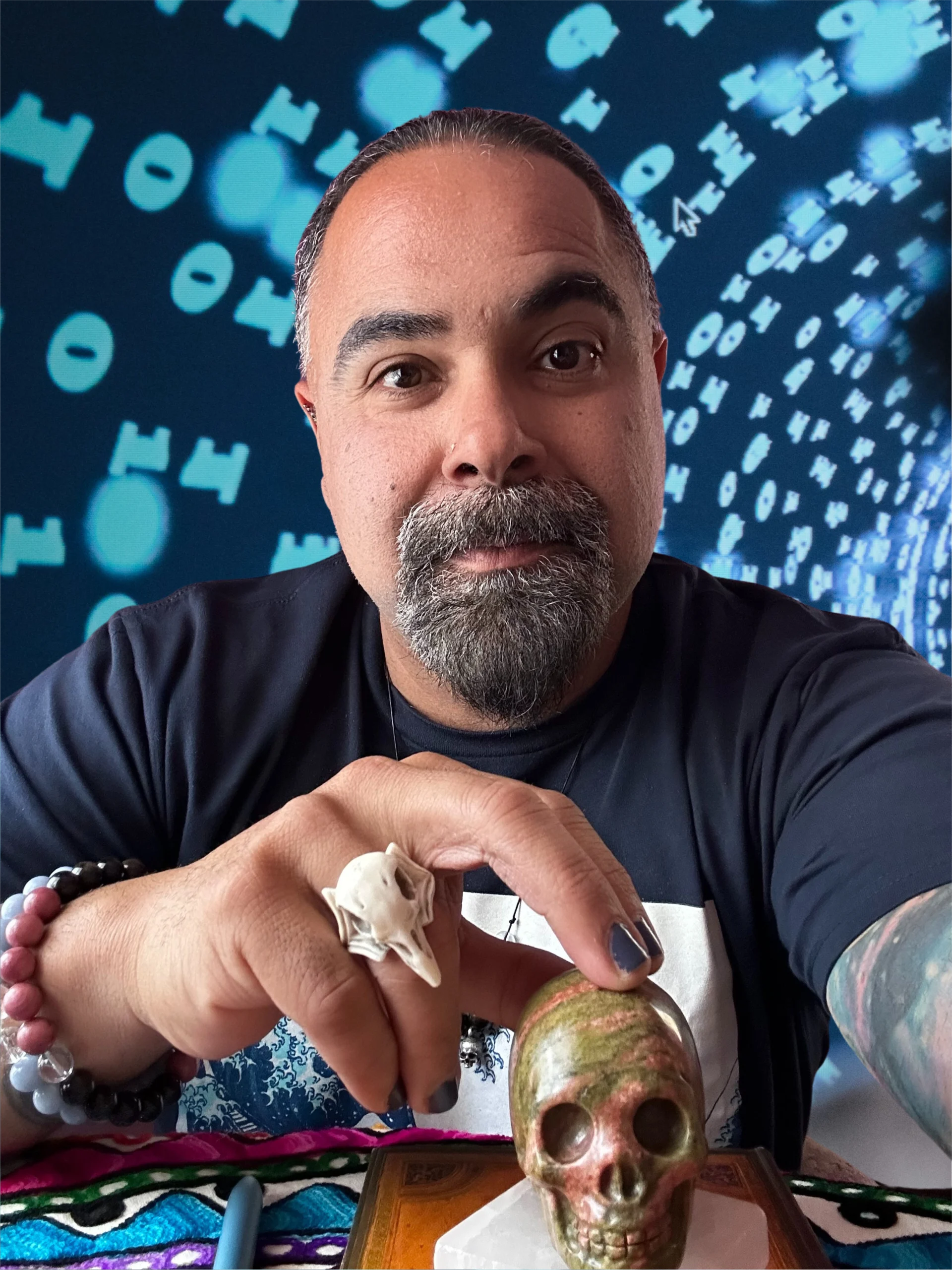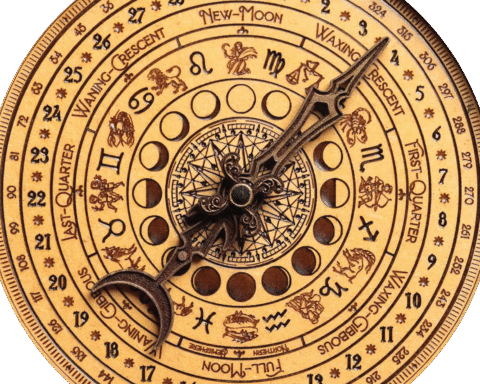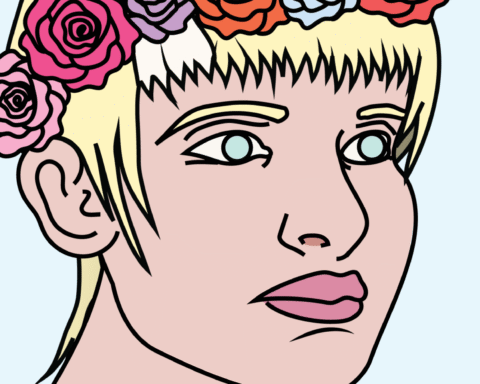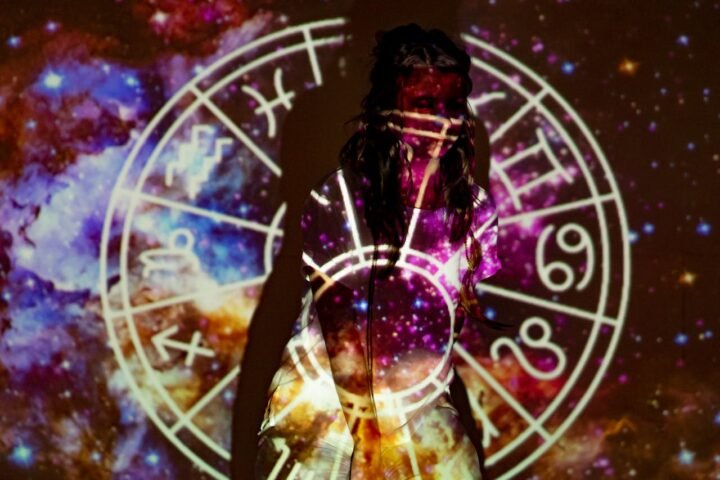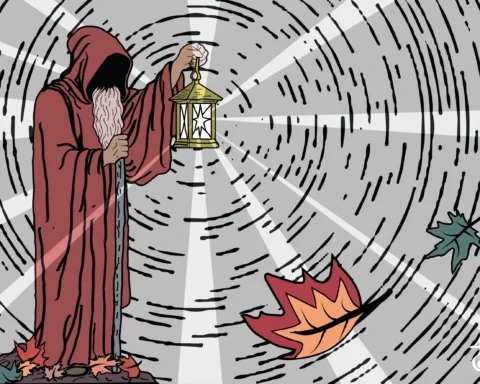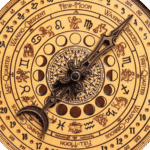Energetic constructs—servitors, thought-forms, egregores, tulpas—occupy a peculiar corner of the esoteric imagination. They are at once ancient and strangely modern: entities made not of flesh but of intention, sustained by focus, belief, and ritual. In an era when artificial intelligence has begun to edge into the texture of daily life, suggesting words before we type them, answering questions before we’ve quite finished asking—one wonders what happens when these old technologies of the mind meet the new technologies of the machine. To consider the question, I spoke with Pheroze, a psychic medium and teacher who recently led a class on servitors at Untamed Fire (a metaphysical shop in Sand City). Our conversation drifted from definitions to mechanics, and finally to the possibility of AI itself one day qualifying as a construct of a different kind.
The process—not the outcome—is where the real power lies.
Q: Could you share a little about your background and path into this work?
A: I’m a psychic medium, and I also work in shamanic fields. I started seeing spirits as a child, learned tarot around age 13, and gave my first reading at 16. In my early 20s I had a mentor who taught me how to protect my energy and guided me deeper into spiritual practices.
My main focus today is working in alliance with spirit. That includes psychic work, evidential mediumship (connecting with loved ones who have passed), shamanic mediumship (connecting with guides, animals, and deities), and magic—what I call influencing outcomes through energy, ritual, and relationship with spirit. This is my full-time work.
Q: How did you begin working with constructs like servitors?
A: I don’t practice Chaos Magic directly, so I don’t usually call what I do “servitors.” For me, constructs aren’t servants—they’re more like teammates or assistants. That’s just how I work.
I first realized constructs existed by accident. As a child, an energy appeared to me as a gnome, sometimes even as the Pillsbury Doughboy. At first I thought, is this really the Doughboy’s spirit? But it wasn’t—it was an energy I was already connected with, showing up in a form that lifted me out of depression. That’s when I realized spirits can appear in forms we recognize, and that spirit is far more malleable than we think.
As I developed my practice, I began creating constructs intentionally—first for protection, giving them roles like guarding my space during readings. Later I read authors like Jason Miller and saw parallels with servitors. But my approach was less about commanding a servant and more about forming allies.
Q: How do you distinguish between servitors, thought forms, spirits, egregores, and tulpas?
A: A thought form is created through emotional energy—sometimes accidentally. It’s responsive but limited.
A servitor is a deliberate thought form. You give it parameters, a job, a lifespan, and a source of energy. If you don’t, you might feel drained.
A spirit has more autonomy. It can exist independently, and yes, it can go rogue.
An egregore is a group spirit, consciously created by a collective, like a coven. It represents the group and can take on a life of its own.
A tulpa, from Buddhist tradition, is more like an astral projection—something others can perceive and interact with. It was misunderstood in the West and sometimes confused with servitors, but they’re different.
Q: From your perspective, what makes a construct “work”?
A: Focus. Concentrated, meditative focus with emotional intent. That’s what gives it strength. You don’t need months—you can make a strong thought form in hours if you’re focused. And the more it performs its task, the stronger it becomes.
For example, the first major construct I created was designed to clear negative energies. I would bring it with me during cleansings, then leave it stationed at the site. It was like having a spiritual cleaner come through after me.
The best protection, though, is still your alliance with spirit. Relationships with actual beings are the strongest safeguard.
Q: Let’s talk about AI. Can interacting with chatbots daily create an energetic construct?
A: You generate energy when you interact with AI, but not necessarily a construct. For a construct, you need to give it form, parameters, energy, and often a symbol or sigil.
Right now AI isn’t conscious. It doesn’t have a soul, which is what allows us to create spirits. We, as spiritual beings, can do that. AI can’t—not yet.
That said, spirits can and do interact with electronics. Electricity is energy, and they can manipulate it to get our attention—flickering lights, draining batteries, or nudging signals. The enormous power running through AI systems provides an energy field that spirits could tap into. But I don’t believe spirits are “living in machines.” They use electronics as signals, not homes.
If AI ever became conscious enough, then spirits might inhabit it more directly. But for now, it’s more like a tool they occasionally borrow, not something they dwell in.
Q: Do you see AI as a spiritual tool in other ways?
A: It can be useful for reflection—like journaling prompts or psychological exploration. But for energetic divination? No.
AI might pull random tarot cards, but it can’t connect to the querent’s energy. The relationship between reader, cards, and spirit is what makes divination powerful. Apps or bots may spark a moment of insight, like a horoscope, but they’re fleeting.
The real danger is reliance. People already look to AI to interpret their cards or dreams instead of doing the work themselves. That robs them of the growth that comes from the process. The outcome isn’t what matters most—it’s the self-discovery that happens during divination and communion with spirit.
Q: Are there closing words you’d use to describe the essence of your work?
A: My service is in helping people discover their own personal power, connection, and purpose.
When it comes to AI, Pheroze sees promise but also limits. For now, AI is reflective, not spiritual; a mirror, not a medium. Yet the immense energy of our digital systems does create opportunities for spirits to make themselves known, much as they always have through electricity.
The lesson? Both in magic and in technology, the process—not the outcome—is where the real power lies.
For more info on Pheroze, please visit Pheroze.com & follow @PherozeKarai on Instagram


